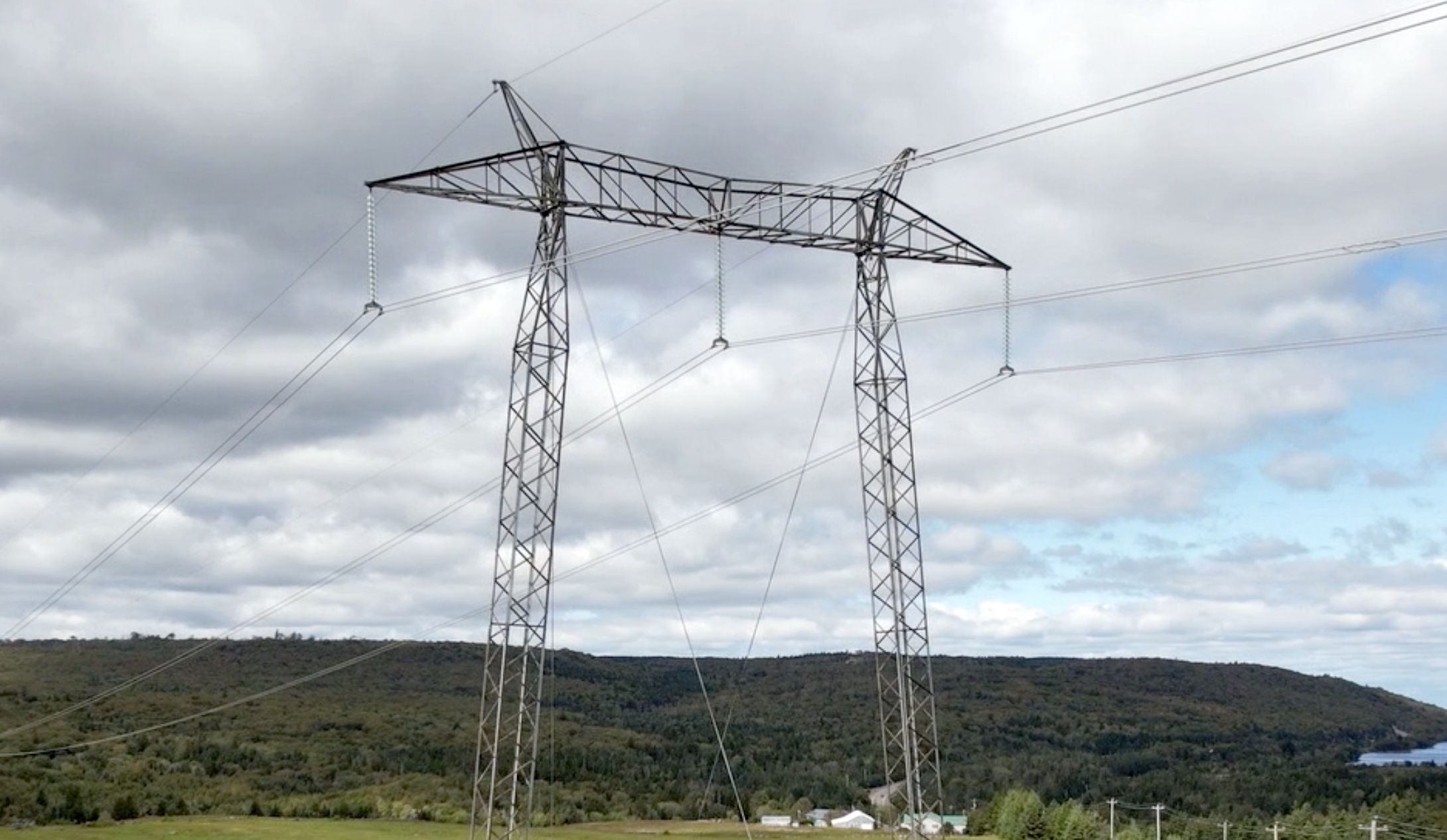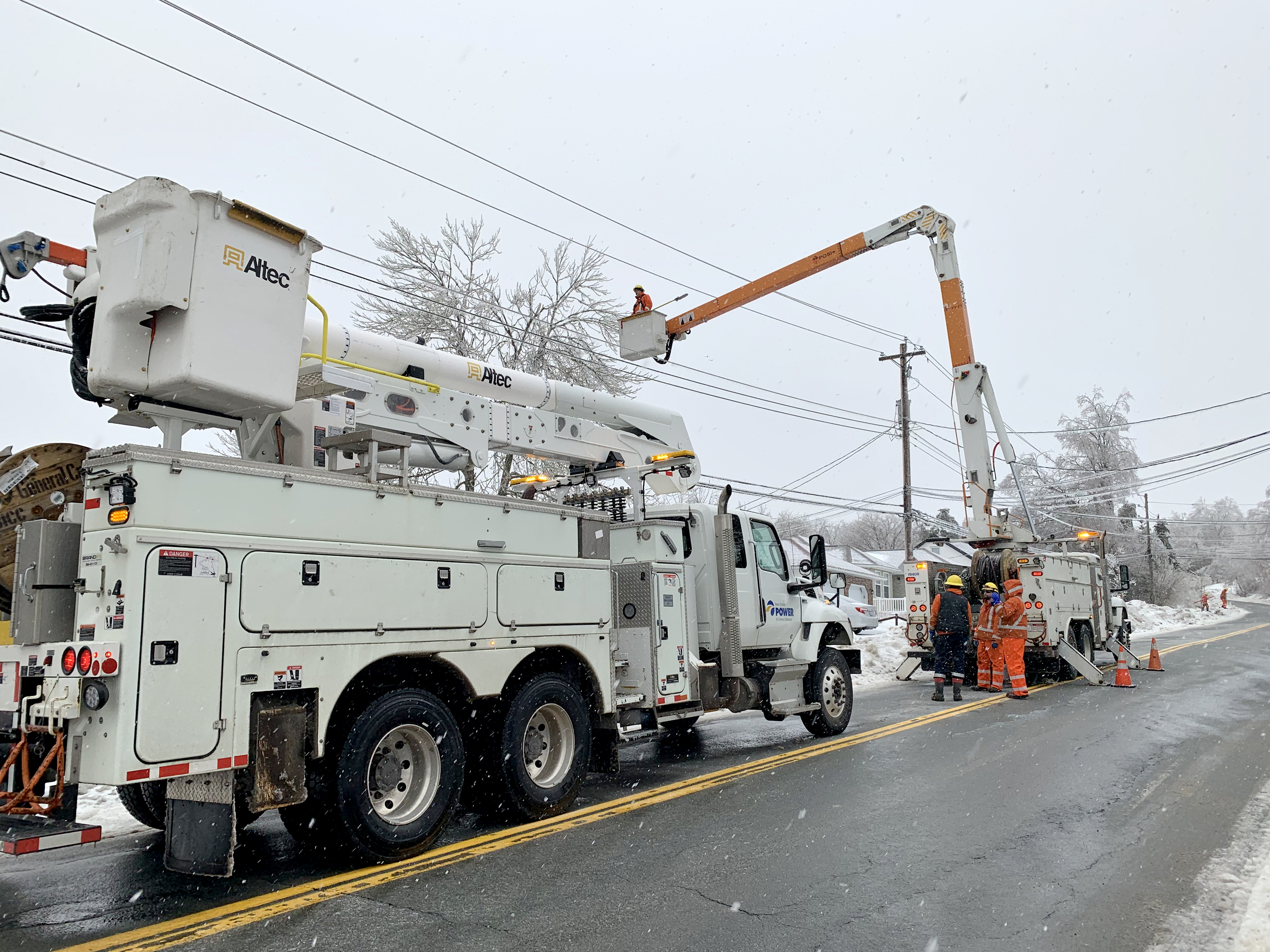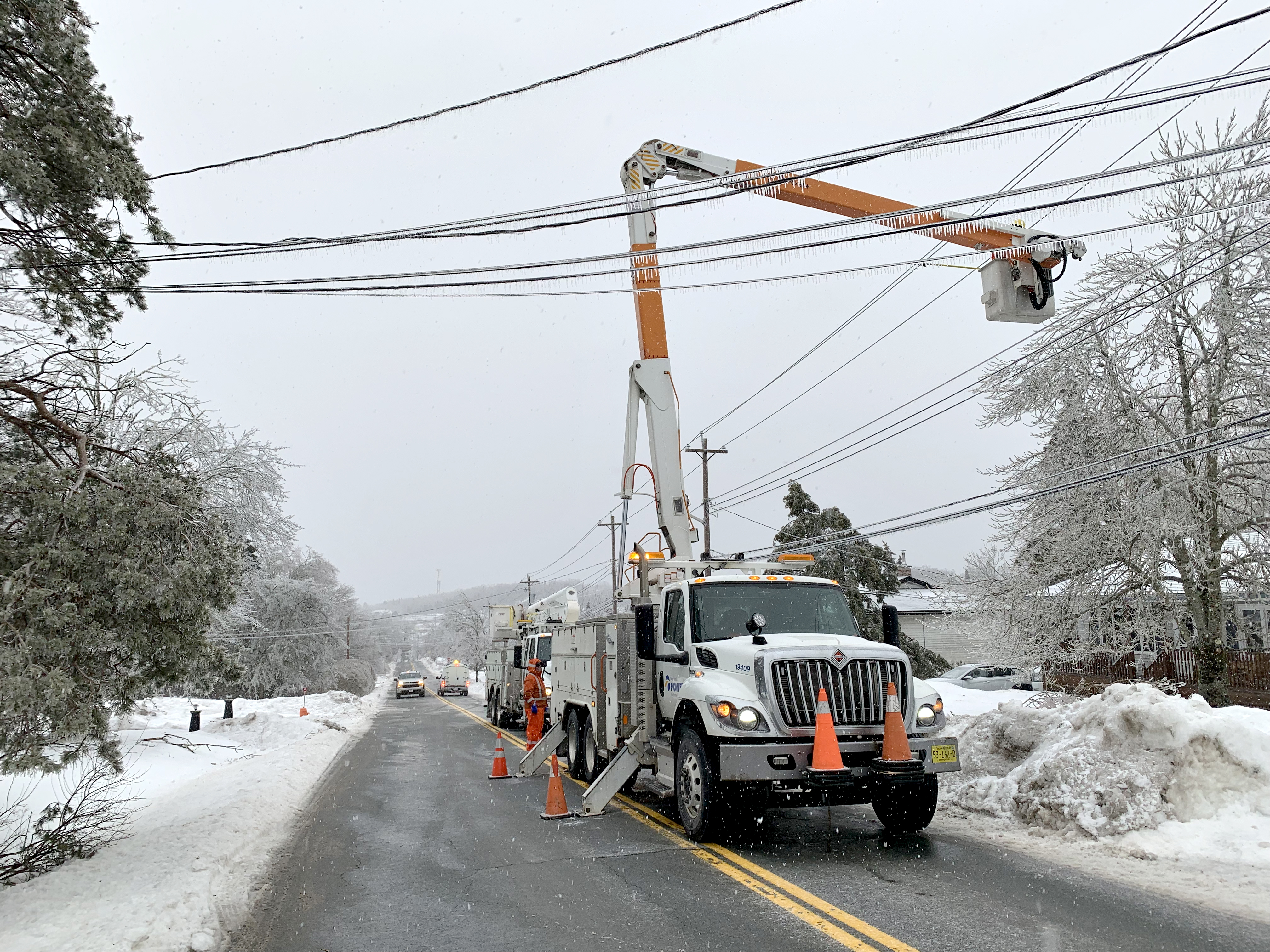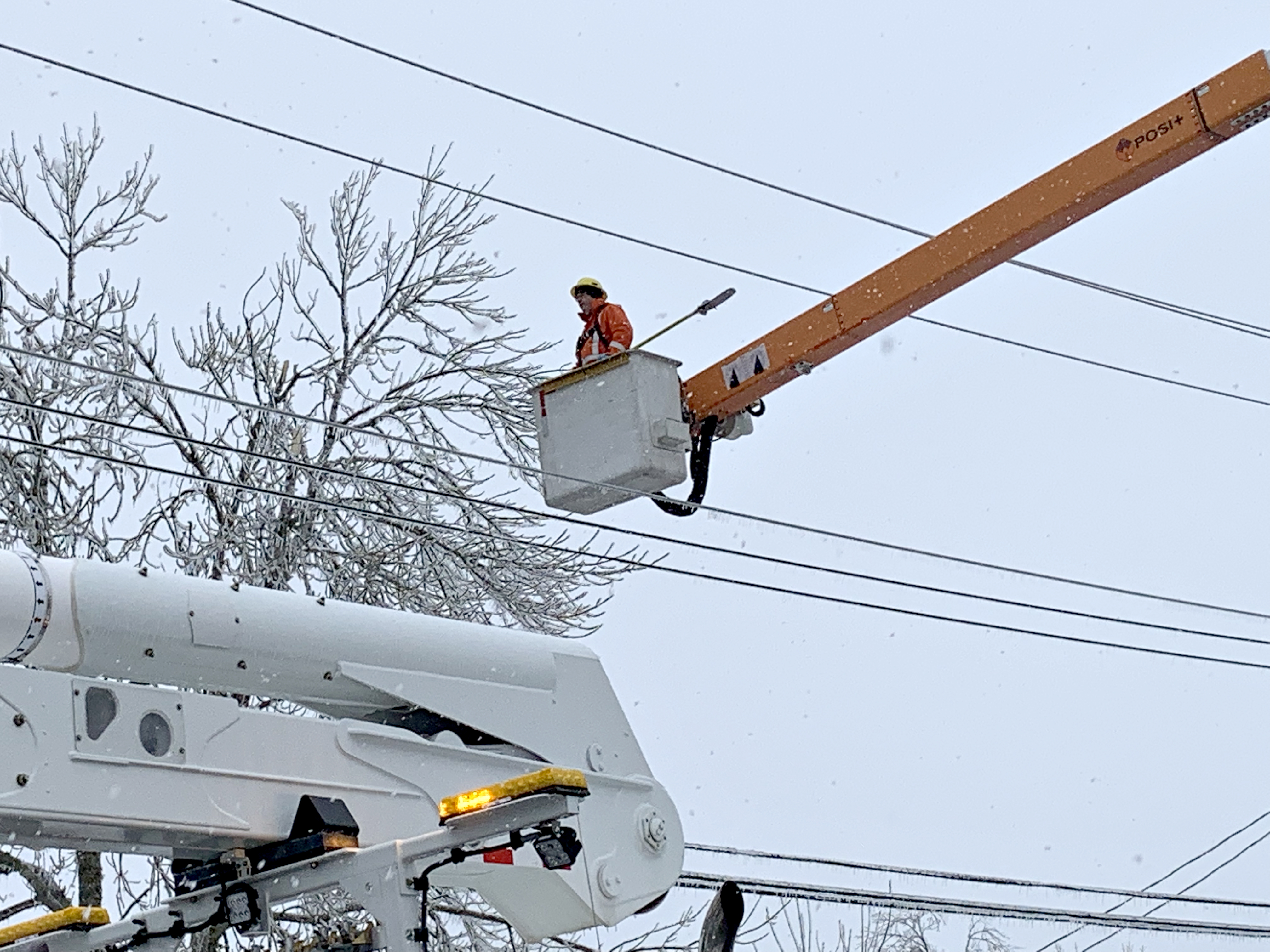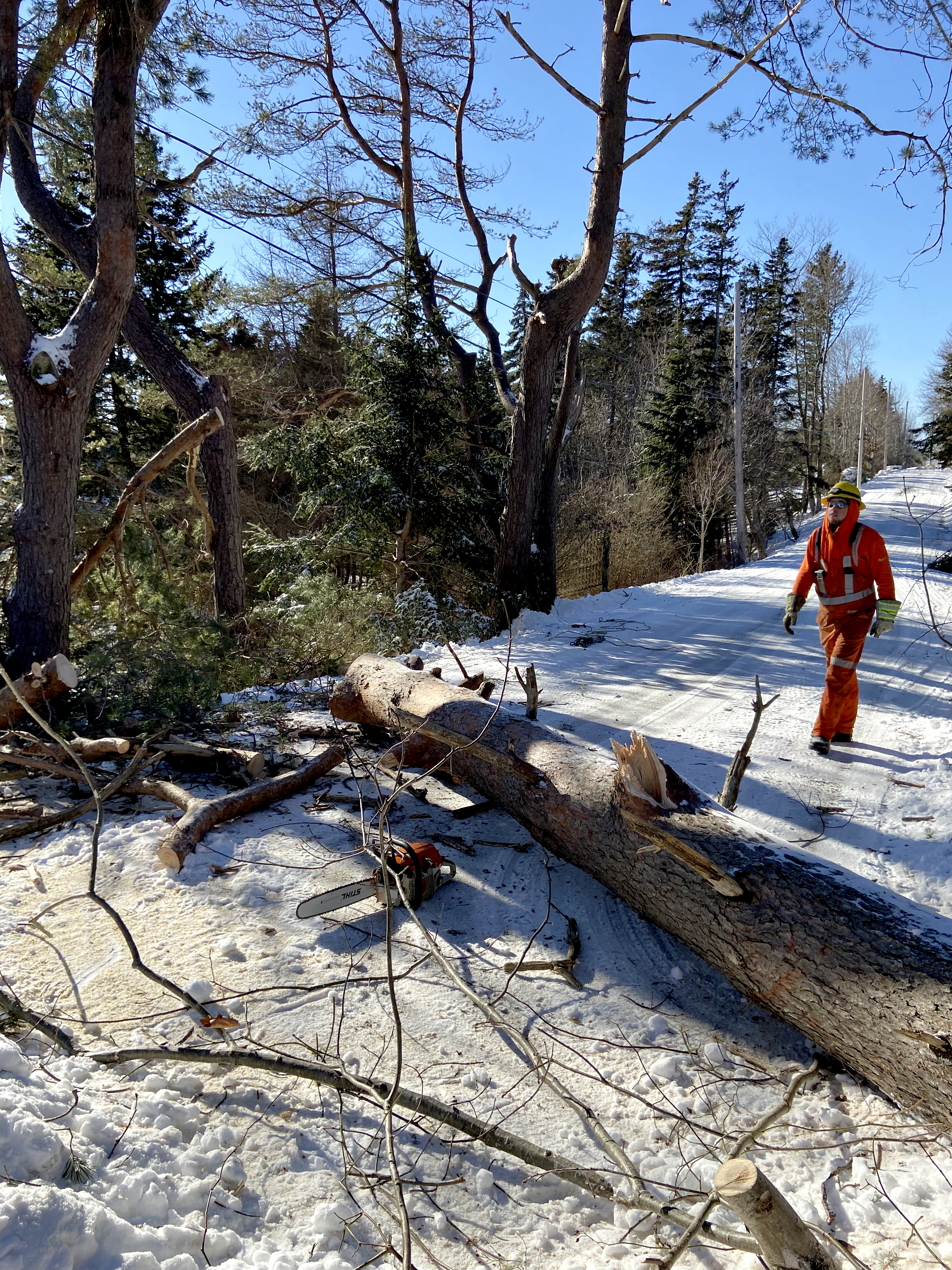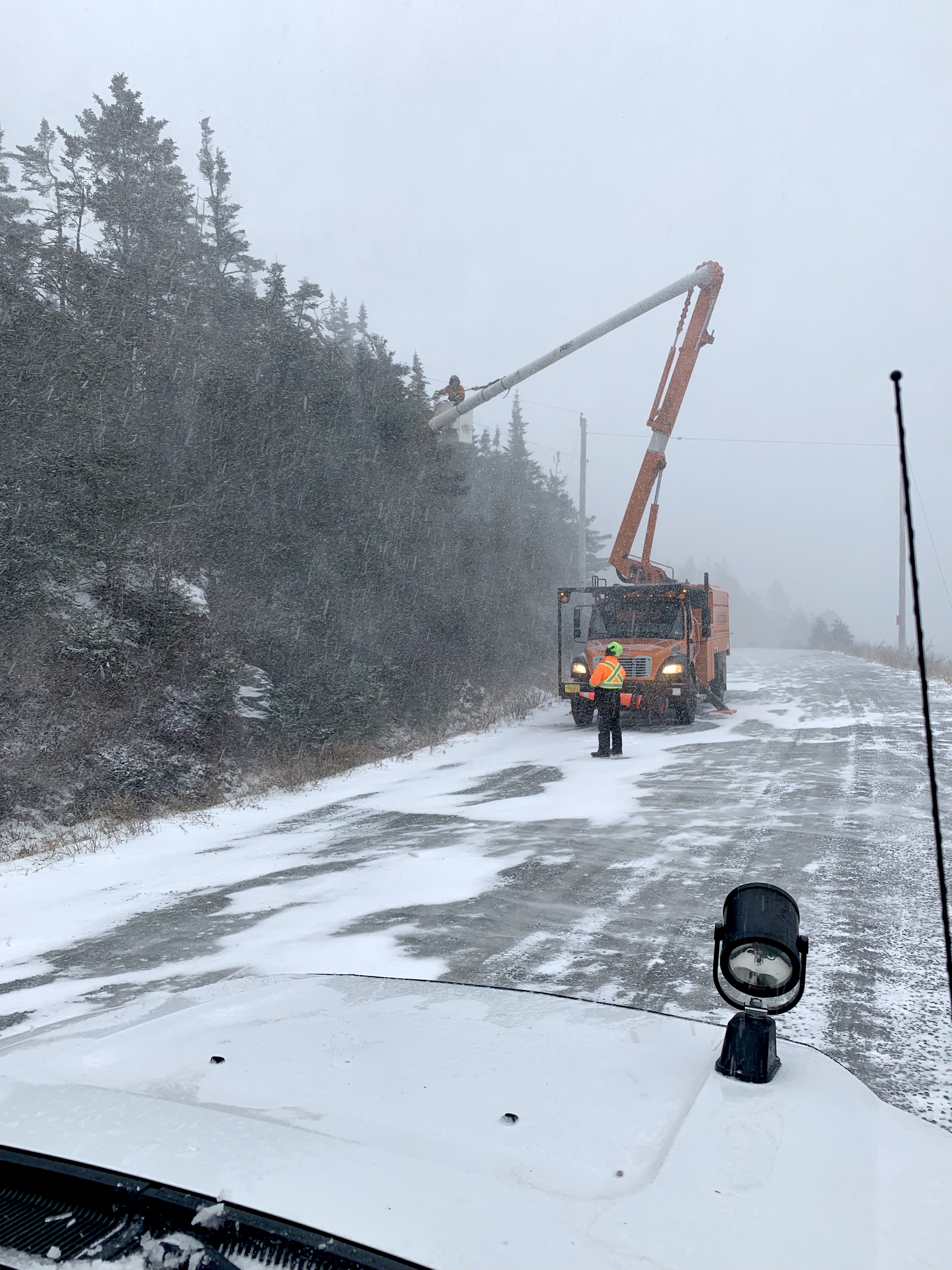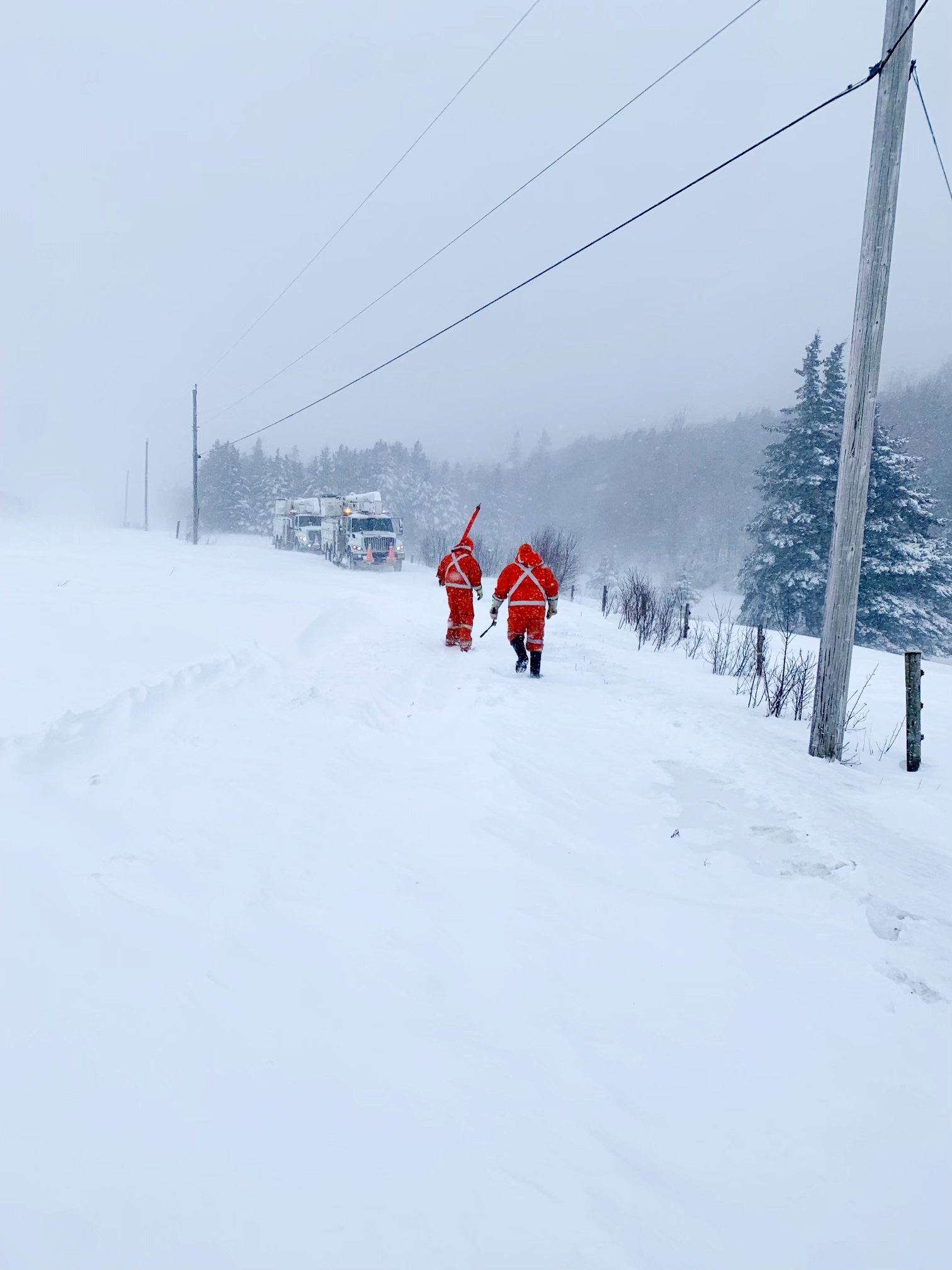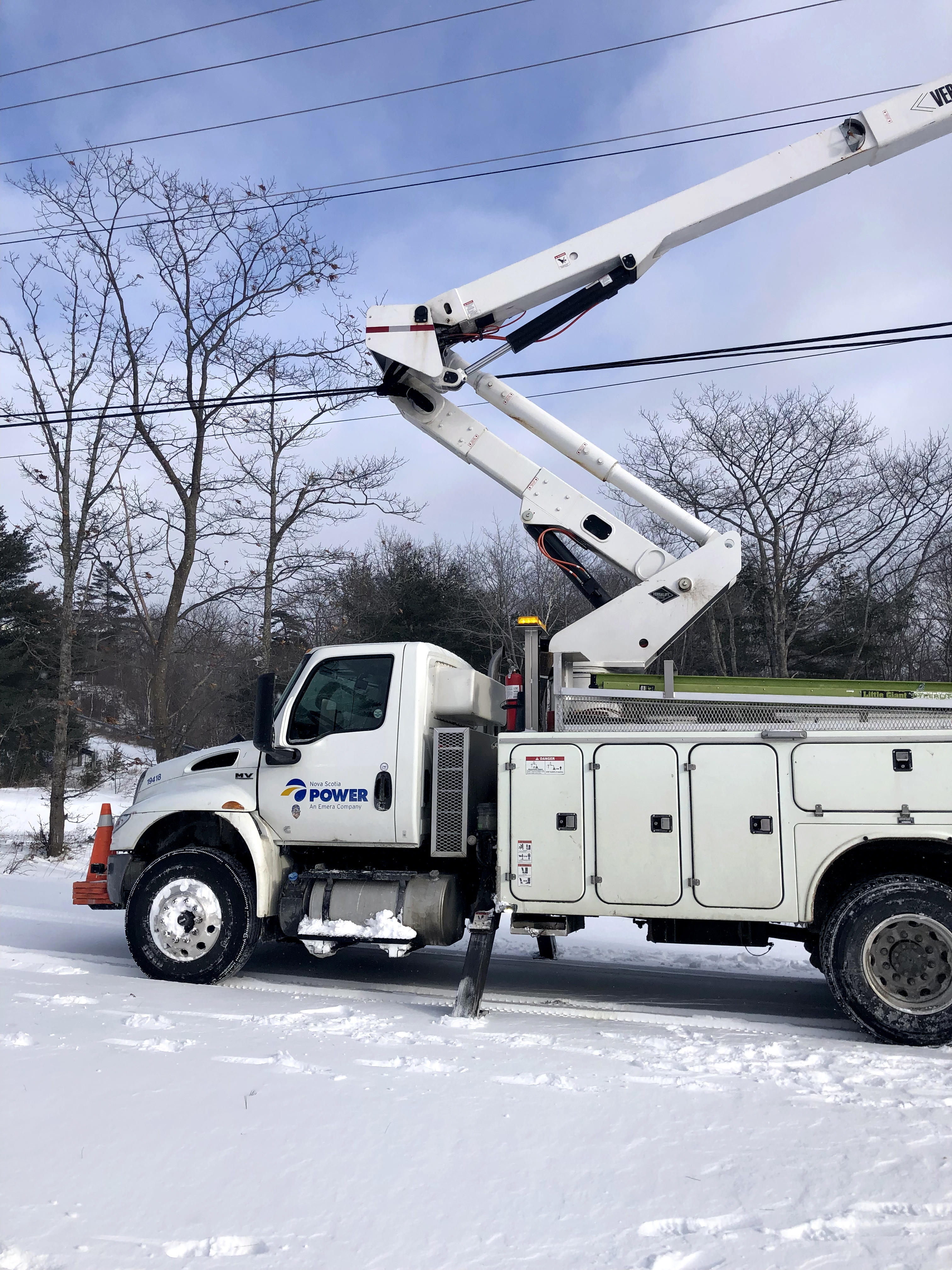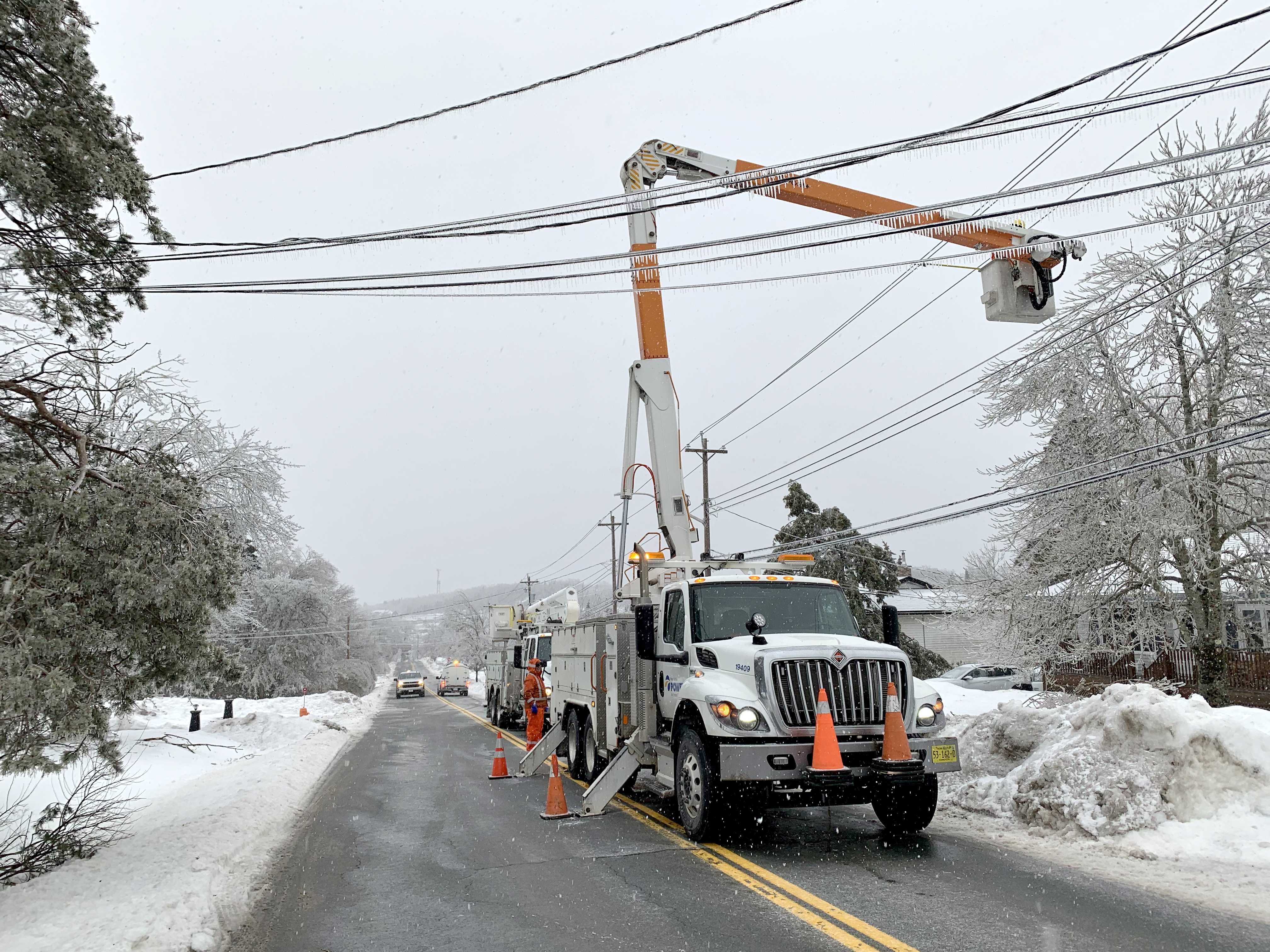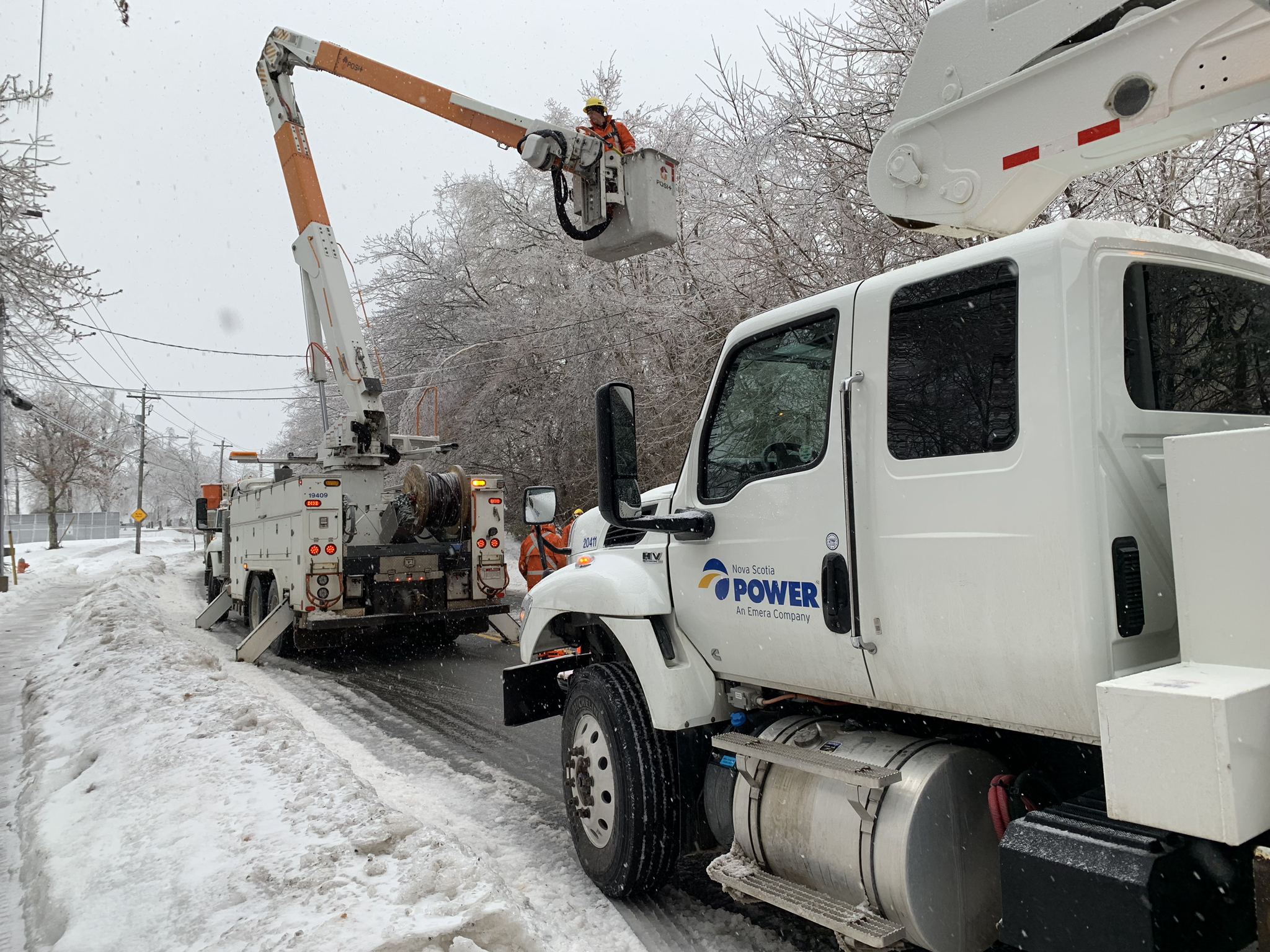You Asked, We Answer: Winter storm season
January and February brought back-to-back storms with weather ranging from high winds with gusts over 100 km/hour, a messy mix of rain and heavy snow, and freezing rain that coated roads, trees and our power lines with ice.
Altogether, we’ve experienced seven storms so far in 2022—a busy start to the year after a comparatively quiet storm season in 2021.
Looking back on the last two months, we wanted to take a moment to acknowledge how challenging storms—specifically power outages caused by storms—can be. We’ve been listening to your questions about storm season and your concerns. From underground lines and extreme weather to how we’re working to prevent outages in the future, we asked our Storm Lead Sean Borden, and Director of Regional Operations, to answer some of your top questions.
Q: Is the weather in Nova Scotia getting worse? What are you doing to prevent power outages during storms?
A: 2022 is shaping up to be an active year for storms. This is in line with the data we’ve been watching over the last five years. Overall, we’re seeing more severe weather events, shifting weather patterns and increased wind speeds.
As our climate changes and our weather gets more severe, we need to change too. Our customers expect and deserve reliable service—and that’s why we’re strengthening and modernizing our electrical system, so that it can stand up to our changing weather.
Outage statistics and equipment monitoring are critical to our planning and decision making. We use trends and predictive analytics to plan large-scale upgrades to our electrical system, maintenance by our crews and tree trimming.
Technology plays an important role in this work. For example, we use ultrasonic scanning to detect the high frequency sound that is given off when an insulator on one of our poles is breaking down. We’re also using digital mapping technology to see the position of trees against our lines to help effectively plan where we trim trees across the province.
Battery storage is another interesting piece of the puzzle. As we modernize our grid for the future, we’re exploring how in-home and grid scale batteries can not only help us store and use more renewable energy, but they can also provide back-up power for customers during outages.
Q: How do you make sure you’re prepared once a storm is on the way?
A: When we see a storm is making its way towards Nova Scotia, we use a damage prediction tool and scenario planning modelling that allows us to estimate the impact. The damage prediction is based on weather conditions, the expected path of the storm, and data gathered during previous storms. It enables our team to analyze the areas that will be most impacted, so that we can safely position our crews and bring in extra resources as needed. It also helps us estimate when restoration for most customers will be complete and the power will be back on. This is updated throughout the storm on our outage map as more damage information from our crews becomes available.
Armed with information about the storm’s impact, and depending on the magnitude of the storm, we open our Emergency Operations Centre (EOC) and bring our EOC team together. This is the team that manages our storm planning and response and works closely with the Nova Scotia Emergency Management Office.
The EOC is the nerve centre for outage restoration. It’s staffed with employees representing all aspects of our company, allowing us to collaborate and react quickly.
Q: Why don’t you bury the power lines? Wouldn’t this reduce outages during storms?
A: We’re always looking at ways to strengthen our electrical system and reduce power outage. And underground lines are absolutely something we’ve explored, but there are a few reasons why they aren’t the best option for us here in Nova Scotia.
While underground lines can help prevent power outages caused by fallen trees and branches, when outages or issues do occur, the cause is harder to locate and any damage can take much longer to repair. Above ground lines make it easier to find and access the issue and restore power.
Burying lines can also be 10 times more expensive for customers than running lines overhead. Not to mention, Nova Scotia’s rocky terrain makes putting lines underground a challenge.
For a deeper dive on the pros and cons on underground lines, check out our blog dedicated to the topic.
Q: Why does my estimated restoration time sometimes change on the outage map?
A: The outage map is a great tool for reporting your outage, checking on the impact of a storm and for looking up your estimated restoration time.
The initial estimated restoration time you see on our outage map is based on a number of factors: weather conditions, location of the outage, suspected severity of damage, past outages in your area, and more.
We do our best to predict when the power will be restored during a storm, but sometimes our crews will get on site and assess the damage and realize that it is more severe than expected, or that the work will take longer. When this happens, the time on the outage map can sometimes change.
We update estimated restoration times once we’re able to assess the damage and identify anything else that may impact power restoration—like an unsafe situation or an unplowed road that’s making it tough for our crews to access the site.
Q: Why do I have to check my meter mast after a storm?
A: Your meter mast is the tube that connects our service line to the electrical meter on the side of your home. While we own the service line, the meter mast belongs to the homeowner—and if it’s damaged, you may have to to have it repaired before we can restore power.
After a storm has passed, have a look to see if the meter mast has pulled away from your house, and check to see if it’s bend or broken. If so, you’ll need a certified electrician to make repairs before we can reconnect your power. You can visit nspower.ca/electricians for more information and to find an electrician in your area.
More information about storms
We’re always here to answer your questions and concerns about storm season and power outages.
Have a question that wasn’t answered in this article? Get in touch through our social media channels, or by calling our Customer Care Centre at 1-800-428-6230.
For more information about how we work throughout the year to prepare for storms and prevent power outages, visit nspower.ca/reliability.
Share This Post:
